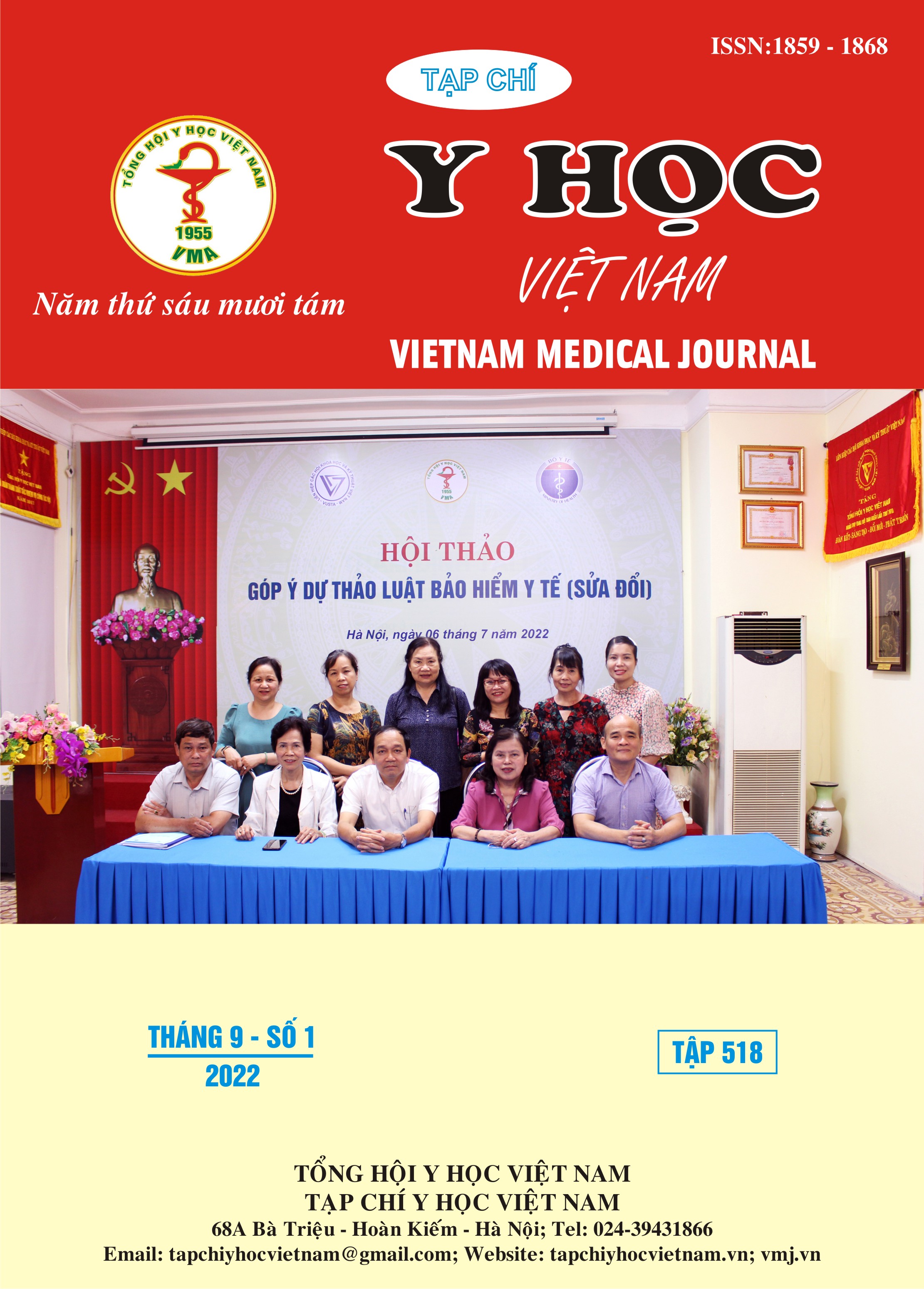MICROBIAL ETIOLOGY AND ANTIBIOTIC RESISTANCE IN VENTILATOR-ASSOCIATED PNEUMONIA PATIENTS TREATED IN THE ICU
Main Article Content
Abstract
Objective: To determine the etiology of bacteria and antibiotic resistance in patients with ventilator-associated pneumonia (VAP) at the ICU1 Department of Thanh Hoa Provincial General Hospital in 2022. Subjects and research methods: A descriptive and prospective study etiology and antibiotic resistance of 86 ventilator-associated pneumonia patients. The patients were admitted to the hospital on ventilators after 48 hours of pneumonia, taking sputum samples in the morning for testing to find the microbial cause and making an antibiotic chart. Results: Average age was 62.6±18.7 years old; the rate of VAP (ventilator-associated pneumonia) is 20.5%; The leading causative agent of VAP is A.baumanii which accounts for 32.38%, Staphylococus.aureus accounts for 19.05%; There were 15 cases where 1 specimen was cultured with 2 types of bacteria (14.29%); The antibiotic sensitivity rate of Staphylococus.aureus is still high to antibiotics such as complete sensitivity to Vancomycin (100%); The antibiotic sensitivity rate of Klebsiella pneumoniae was highest to Fosmici (70.59%), Imipenem (64.71%); The antibiotic sensitivity rate of P.Aeruginose is still as high as Meropenem (50%); The antibiotic sensitivity rate of E.coli is quite high to many antibiotics such as Meropenem (75%), Imipenem (75%); The antibiotic sensitivity rate of A.baumanii is very low while the antibiotic resistance rate of A.baumanii is very high such as Levofloxacin and Ciprofloxacin resistance rate 85.3%. Conclusion: The cause of Acinetobacter baumannii accounts for 32.38%. The antibiotic sensitivity of the bacteria that causes VAP, Staphylococus aureus, is completely sensitive to Vancomycin (100 sensitivity), Pseudomonas aeruginose is still highly sensitive to Meropenem (50 sensitivity), Klebsiella pneumoniae is still quite sensitive to Fosmicin (70.59% sensitivity and 11.76% intermediate). E.coli has a high rate of sensitivity to Meropenem (75%), Acinetobacter baumanii is still sensitive to Meropenem but a low rate of 29.4%.
Article Details
Keywords
Microbiology, Antibiotic resistance, ventilator-associated pneumonia
References
2. MelsenWG, RoversMM, GroenwoldRH, etal (2013), “Attributable mortalityof ventilator - associated pneumonia:ameta–analysis of individual patient datafrom randomised prevention studies”. LancetInfectDis.,13(8):665-71
3. Hà Sơn Bình(2015). Nhận xét một số yếu tố liên quan và hiệu quả điều trị ở bệnh nhân viêm phổi liên quan đến thở máy. Luận văn Bác sỹ chuyên khoa cấp II, Bệnh viện BạchMai.
4. Mehta RM, Niedermann MS (2003), “Nosocomial pneumonia in the intensive care unit: controversies and dilemmas”, J Inten Care Med ;18, pp.175
5. Nguyễn Thị Thanh Nga (2013), "Đánh giá tình hình sử dụng kháng sinh trên bệnh nhân viêm phổi liên quan thở máy ở khoa Hồi sức tích cực bệnh viện Trung ương Quân đội 108", Khóa luận tốt nghiệp Dược sĩ, Trường đại học Dược Hà Nội.
6. Phu VD, Wertheim HFL, Larsson M, Nadjm B, DinhQ-D, NilssonLE,et al.(2016),“Burden of Hospital Acquired Infections and Antimicrobial Use in Vietnamese Adult Intensive Care Units”, PLoS ONE 11 (1):e0147544.doi:10.1371/journal.pone.0147544.
7. Bộ Y tế (2015), “Viêm phổi bệnh viện, Hướng dẫn sử dụng kháng sinh”, NXB Y học, 93– 98.
8. Nguyễn Ngọc Quang và cộng sự (2012), “Tình hình viêm phổi liên quan đến thở máy tại khoa Hồi sức tích cực bệnh viện Bạch Mai”, Nội khoa Việt Nam, số5,tháng 9/2012, tr.57 – 62


